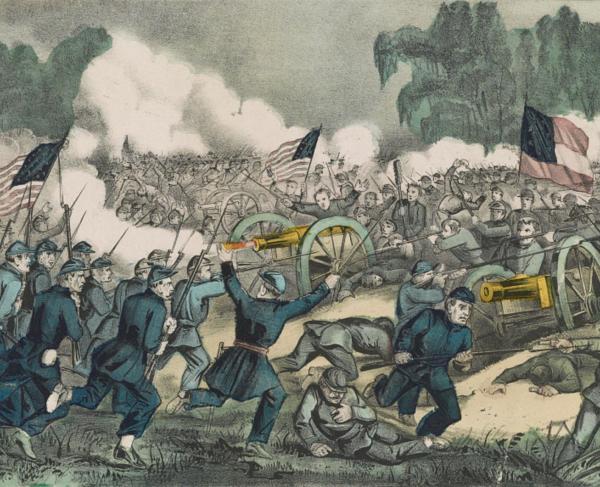The Maryland Campaign of 1862
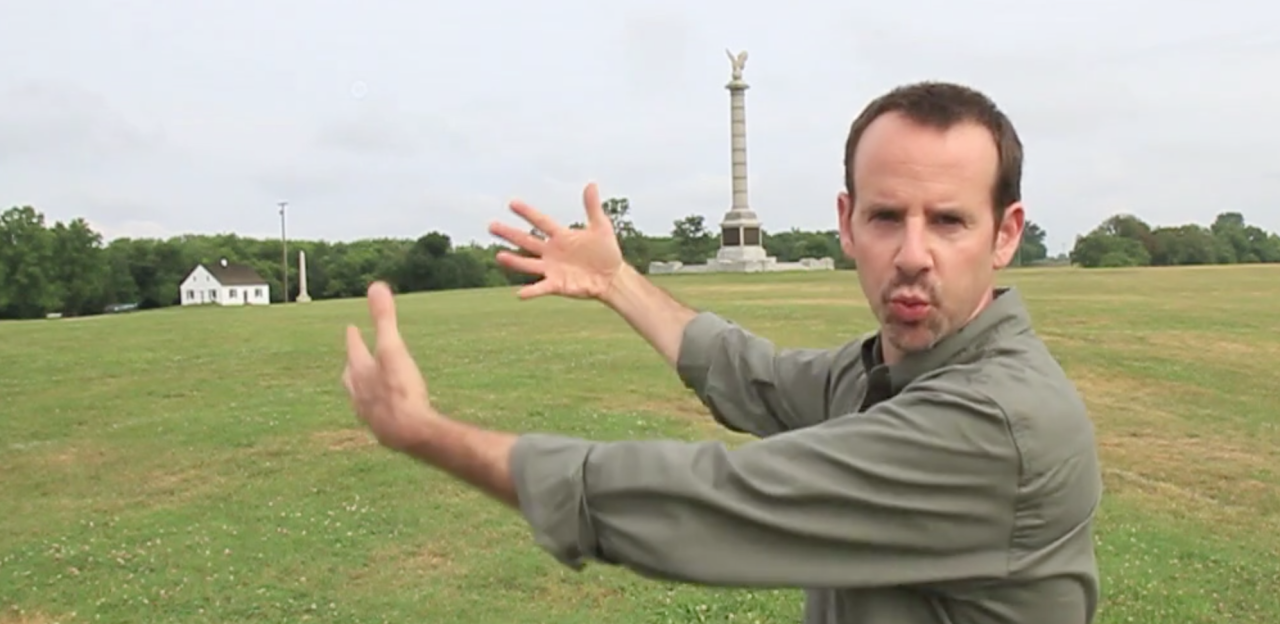
By Scott Hartwig
September 1862 was a momentous month, a period of crisis for the United States and exciting opportunity for the Confederate States of America. The bright hopes of Northerners that the rebellion could be crushed that summer had wilted like the leaves of fall. In July, the grand campaign of Major General George B. McClellan’s magnificent Army of the Potomac to capture the Confederate capital of Richmond ended in defeat. Then, at the end of August, Major General John Pope’s Army of Virginia, with heavy reinforcements from the Army of the Potomac, was soundly thrashed in the Second Battle of Manassas. The Union armies stumbled back to Washington seeking shelter within the capital’s fortifications. In the western theater, two Confederate armies mounted an offensive that carried into Kentucky. Disgust and discouragement prevailed across the North. Inside the nation’s capital one Union soldier, reflecting the mood of many in the army, wrote: “The whole army is disgusted . . . you need not be surprised if success falls to the rebels with astonishing rapidity.”
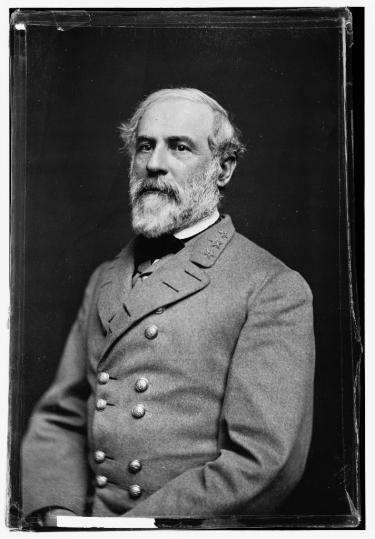
The architect of the Confederate victories in the east, General Robert E. Lee, sought to exploit the opportunity his victory at Second Manassas offered. Lee understood from the beginning of the war that the Confederacy’s best hope for independence rested upon the morale of the Northern people. If they believed the war could not be won, or could only be won at too high a cost, then Southern independence became a real possibility. Confederate military successes were the means to erode morale and create this political climate. The fall elections in the North were approaching. England and France stood on the sidelines watching closely, carefully weighing whether they should recognize the Confederacy. Lee sensed a great opportunity was at hand. He believed the Union army was disorganized and demoralized. He also knew that it was receiving many reinforcements in the form of newly raised regiments in answer to President Lincoln’s July call for 300,000 volunteers. Only one move would force the Federals to place their army in the field before they had reorganized and offered the best chance to do further damage to Northern morale: Invade the border state of Maryland.
“The army is not properly equipped for an invasion of an enemy’s territory,” Lee wrote Confederate President Jefferson Davis, but he nevertheless understood that this was his best move. He determined to enter Maryland east of the Blue Ridge Mountains, and advance to Frederick, Maryland. Here his army would threaten Baltimore and Washington, as well as Pennsylvania. The Federals would have no choice but to leave the Washington fortifications to confront him. When they did, he planned to march west from Frederick, crossing the Catoctin Mountains and South Mountain, to Hagerstown. The idea was to draw the Union army far from its supply depots and fortifications, where they might be dealt a more decisive blow. By September 3 Lee’s Army of Northern Virginia numbered some 70,000 troops of all arms, but logistically the army was in possibly the worst condition it would be in during the entire war. The troops were poorly fed and uniformed, which contributed to long sick lists. Lax discipline combined with the chronically short and poor rations issued to the men encouraged massive straggling, and the army would leak thousands of stragglers as it moved across Maryland.
On September 4, advance elements of the army crossed the Potomac into Maryland near Leesburg, Virginia. Over the next three days the main body of the army forded the river and advanced without opposition to Frederick.
In Washington, news that the Confederates were pouring into Maryland in large numbers created a crisis for President Lincoln. The defeat at Manassas had resulted in ugly accusations and finger pointing. Pope claimed that McClellan and the Army of the Potomac had not sustained him as they should have, and he even levied charges against several key officers. Lincoln understood that the army had lost confidence in Pope and he needed to go, but he hoped to have some breathing space to select a new field commander. As a temporary measure he placed McClellan in command of all the troops within the capital’s fortifications. Feelings against McClellan were so strong among members of Lincoln’s cabinet, that several of them presented a declaration for the President stating that they did not believe it was safe to entrust McClellan with the command of “any of the armies of the United States.” But Lee gave Lincoln no respite and the Confederate invasion of Maryland forced him to place an army in the field. Given the pace of events, Lincoln had no choice but to place McClellan in command. McClellan had the army’s confidence. As one of his soldiers put it, “the effect of this man’s presence upon the Army of the Potomac – in sunshine or rain, in darkness or in daylight, in victory or defeat – was electrical.”
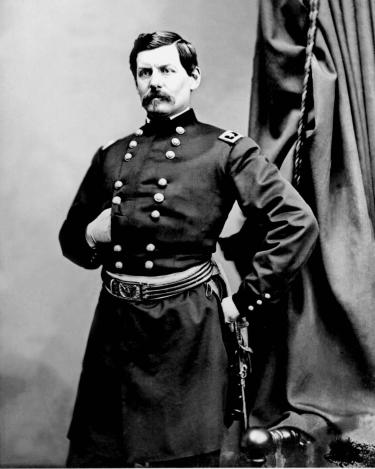
There was great irony in Lincoln’s decision for he hoped that McClellan and the army would serve as a tool to not only turn back the Confederate tide, but to provide the opportunity for a war-changing measure. Sensing that the time had come that he might up the ante in the war, Lincoln had prepared an Emancipation Proclamation, a document presaging profound change by adding emancipation to the North’s heretofore single objective of preserving the Union. Lincoln knew that many Northern soldiers and civilians opposed emancipation, on grounds of race, or because of their ambivalence towards slavery or the belief that introducing such an objective would only encourage Southerners to fight more desperately. The Democrats were firmly in this camp and one of the staunchest supporters of this viewpoint was McClellan. Earlier in the war, he expressed his opinion, “I am fighting to preserve the integrity of the Union and the power of the Govt – on no other issue. To gain that end we cannot afford to mix up the negro question – it must be incidental and subsidiary.” But the issue of slavery was hardly incidental or subsidiary. It entangled itself with nearly everything about this war. Slaves formed the economic backbone of the Confederacy. Slaves enabled the Confederacy to mobilize more of its young white men for military service. Even setting the emotional issue of slavery aside, an attack upon slavery struck at the underpinnings of the Southern economy and the Confederates’ ability to wage war. But Lincoln needed to issue his proclamation from a position of strength, or else risk having his measure look like a desperate act of a sinking administration. He needed a battlefield victory and he counted on McClellan and the Army of the Potomac to deliver it.
When the Army of Northern Virginia occupied Frederick, Lee expected the Union garrisons at Harper’s Ferry and Martinsburg would be withdrawn, clearing the way for him to establish communications through the Shenandoah Valley. But Union General-in-Chief Henry W. Halleck ordered the garrisons to remain, leaving them both isolated but astride Lee’s intended line of communications. Confident that the Army of the Potomac would advance slowly from Washington, Lee conceived a bold plan to destroy or capture these garrisons. The plan called for three columns to converge upon them. Walker’s division would re-cross the Potomac and capture Loudoun Heights, overlooking Harper’s Ferry south of the junction of the Shenandoah and Potomac Rivers. Lafayette McLaws with his own and Richard Anderson’s division was tasked with capturing Maryland Heights, the key to the possession of Harper’s Ferry. Major General Thomas J. “Stonewall” Jackson commanded the strongest column, consisting of three divisions. Their mission was to march west from Frederick, cross the Potomac, capture or smash the Martinsburg garrison, or drive it back upon Harper’s Ferry, then complete the capture or destruction of the Harper’s Ferry garrison by sealing off its escape routes to the west. The balance of the army would march to Boonsboro, a village nestled against the western side of South Mountain. The army marched on September 10. Lee expected the operation could be wrapped up by September 12.
As the Confederate columns made their way across western Maryland, the Army of the Potomac advanced slowly out of Washington. McClellan assembled a force of some 80,000 men of all arms, although nearly 20,000 of his infantry were raw recruits, most of whom had little training. Later in the campaign reinforcements would raise his strength to around 85,000. The army moved out from Washington between September 4 and 6 in three columns along a line of advance designed to screen both Baltimore and Washington. On September 12 advance elements of the army entered Frederick. McClellan possessed a plenitude of reports about Confederate activity but they left him utterly baffled as to Lee’s intentions. “From all I can gather secesh is skedadelling,” he concluded in a letter to his wife. But on September 13 several non-commissioned officers of the 27th Indiana discovered a copy of Lee’s orders for the Harper’s Ferry operation, Special Orders no. 191, lying on the ground wrapped around three cigars in a recently abandoned Confederate camp. The discovery of the orders cleared much of the fog from the operational picture. Harper’s Ferry was in grave danger, but Lee’s army was divided and ripe for defeat in detail. McClellan drew up a plan up for a two-pronged offensive on September 14. Some 19,000 men from the Sixth Corps and Fourth Corps, under Major General William B. Franklin would spearhead the effort to relieve Harper’s Ferry, by smashing their way through Crampton’s Gap in South Mountain and attacking McLaws’s rear. The rest of the army, the First, Second, Ninth, and Twelfth Corps, and George Sykes’s Fifth Corps division – nearly 60,000 men – would cross South Mountain at Turner’s Gap, descend to Boonsboro and interpose themselves between Lee’s forces at Boonsboro and the rest of the Army of Northern Virginia. The plan had merit but it presumed that Turner’s Gap, which was only some two miles from Boonsboro, could be easily secured, and Franklin’s force was light considering the importance of its mission.
Unknown to McClellan, Lee was even more vulnerable than Special Orders no. 191 suggested. The Confederate had further divided his army after leaving Frederick, marching to Hagerstown with Major General James Longstreet’s command of two divisions and leaving Major General D. H. Hill’s division alone at Boonsboro. And, the Harper’s Ferry operation had not met its timetable. Although the Confederates managed to bottle up both Union garrisons at Harper’s Ferry, and held all the key positions around that place by September 13, the Federals continued to hold out. That same day Lee learned that elements of the Army of the Potomac were advancing toward South Mountain. He dispatched a warning to Jackson and McLaws to hasten the capture of Harper’s Ferry and he ordered D. H. Hill to defend Turner’s Gap. He also decided to take the added precaution of marching Longstreet’s command back to Boonsboro the next morning.
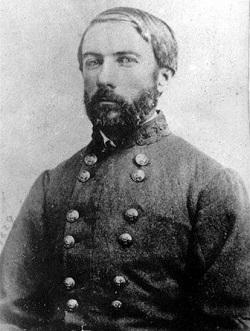
On the morning of September 14, advance elements of the Army of the Potomac attempting to clear Turner’s Gap encountered part of D. H. Hill’s division. A confusing and sharp action developed in the rough mountain terrain of South Mountain, and although Longstreet reinforced Hill in the afternoon, by nightfall the Union First and Ninth Corps had captured the key positions that rendered the Confederates’ position untenable. Five miles to the south, at Crampton’s Gap, the Sixth Corps overcame fierce resistance by a small Confederate force and smashed their way through Crampton’s Gap into Pleasant Valley on the west side. Union losses for the day were 2,346. The Confederates lost more than 4,100 men. That night as Lee assessed the situation he decided his campaign had failed and he made plans to withdraw Longstreet and D. H. Hill to Virginia by way of Sharpsburg and to break off the Harper’s Ferry operation, which he knew still had not concluded. McLaws ignored Lee’s orders to retreat to Virginia and during the early morning hours of September 15 he assembled a defensive line across Pleasant Valley, facing Franklin’s Sixth Corps. Even before he received Lee’s orders to break off the operations against Harper’s Ferry, Jackson had sent a courier speeding through the night with news that the surrender of the Union garrison was imminent. When Lee received Jackson’s report on the morning of the 15th, he had already modified his plan to withdraw Longstreet and D. H. Hill to Virginia immediately, and ordered both commands to halt behind Antietam Creek, near Sharpsburg. Here he would wait to see how McClellan responded to his success at South Mountain. If he pressed hard, Longstreet and Hill could still withdraw to Virginia. But if he moved cautiously, Lee might be able to concentrate his army and offer battle in Maryland. The reasons and the wisdom of Lee’s decision to try and make a stand in Maryland have been debated ever since. He never fully explained his reasons, but by remaining in Maryland and hazarding a battle, he kept alive the possibilities the Maryland invasion had promised. If he could check McClellan and the Federals withdrew, then operations could be maintained on the Confederate frontier north of the Potomac and pressure continued on the North. If he withdrew to Virginia those opportunities were lost.
The early morning of September 15 at Harpers Ferry opened with a heavy artillery bombardment. By 8 a.m. the Union garrison of some 13,000 men, out of long-range ammunition for their artillery, were forced to surrender. At a cost of perhaps 400 casualties Stonewall Jackson won one of the most complete victories of the war for the Confederates. Meanwhile, McClellan learned that Lee had retreated from South Mountain, and reports from the front led him to believe that the Rebels had been badly thrashed and were in rapid retreat for Virginia. He commenced an immediate pursuit of what he presumed was a fleeing enemy. But his euphoria was dashed that afternoon when reports came in of an enemy line of battle forming behind Antietam Creek, and Franklin reported a strong Confederate force standing defiantly across the approach to Harper’s Ferry.
Severe straggling had reduced Longstreet’s command and Hill’s division to about 11,000 men, but Lee and Longstreet skillfully deployed them on the undulating terrain around Sharpsburg so that the Federals who observed them estimated their strength at four times that. All day on September 15 the Army of the Potomac poured over South Mountain and massed around Keedysville. Lee watched and waited anxiously. It was now a matter of time. Could his scattered divisions reunite before McClellan struck?
Within hours of arranging for the surrender of the garrison at Harper’s Ferry, Jackson set out with two of his three divisions, leaving A. P. Hill’s division behind to carry out the details of the surrender. Walker’s division followed Jackson, and McLaws withdrew his two divisions unmolested by Franklin from Pleasant Valley to Harper’s Ferry.
McClellan spent the morning of September 16 waiting for a fog to lift, and then when it did, he busied himself with reconnaissance of the Confederate positions. While the hours ticked by, Jackson’s two divisions and Walker’s division joined Lee at Sharpsburg. Straggling had reduced their strength by thousands, but they raised Lee’s manpower to about 21,000. McClellan had about 60,000 effectives on hand. The odds were still long and Lee sent urgent messages to McLaws to hurry to Sharpsburg. The Georgian, whose men were desperately short of rations, marched through the night, losing perhaps one-third of his strength to straggling, but he reached Sharpsburg before daylight on the 17th. With McLaws and Anderson up, Lee had about 35,000 men. His army held a strong position with one flank anchored on the Potomac and the other on Antietam Creek.
Lee knew he would be attacked on the 17th. On the afternoon of September 16, McClellan at last set his army in motion, sending Major General Joseph Hooker’s 1st Corps across Antietam Creek to find Lee’s left flank. Just at dusk Hooker bumped into Hood’s division and the two forces skirmished until dark. The night was pitch dark with a slight drizzle. “I shall not, however, soon forget that night,” wrote Union General Alpheus Williams, “so dark, so obscure, so mysterious, so uncertain.”

The Battle of Antietam commenced at first light on the 17th. Because McClellan fed his army corps into the battle piecemeal, the battle developed into three distinct phases. All shared one common characteristic - it was the bloodiest and most shocking battle any of the combatants had yet seen. “The roar of the infantry was beyond anything conceivable to the uninitiated,” wrote General Williams. The action opened on Lee’s left, where the battle raged from first light to about 10 a.m., then the main action shifted to the center until early afternoon, when it moved to the Confederate right. Lee came perilously close to defeat several times, but McClellan’s uncoordinated attacks enabled him to parry blows by shifting troops from quiet sectors to threatened points. The battle ended in high drama, when Lee’s right flank began to crumble under an attack by the Union Ninth Corps. A. P. Hill’s division arrived from Harper’s Ferry at this critical moment, counterattacked the Federals and restored the line. By sunset, 2,108 Union soldiers were dead, 9,549 wounded and 753 missing. Incomplete Confederate figures gave their losses at 10,291. Some 23,000 men were casualties; most of them killed or wounded, in a single day. The battlefield, wrote one Union officer, was “indescribably horrible.” No other day of the war would surpass Antietam in carnage.
During the night thousands of stragglers rejoined Lee, nearly making good his losses of the 17th. Lee decided to stand his ground again on the 18th. He had little to gain by doing so. McClellan also received reinforcements, but he chose not to renew the battle, a decision endorsed by nearly all his generals. Lee ordered a retreat on the night of the September 18 and by the next morning the Confederates were across the Potomac and in Virginia. McClellan ordered a cautious pursuit and on September 20, elements of the Fifth Corps crossed the Potomac near Shepherdstown. Lee reacted vigorously and sent A. P. Hill to drive them back, which he did, inflicting 363 casualties.
The Maryland Campaign was over. Although the Confederates could celebrate a brilliant victory at Harper’s Ferry, the campaign had failed. At a cost of thousands of battle and non-battle casualties, no real damage had been done to Northern morale and the odds of European recognition grew dimmer. For the Union, despite the Harper’s Ferry disaster and the indecisive nature of Antietam, the campaign and battle proved a crucial strategic victory. The Confederate invasion was turned back and Antietam seemed enough of a success that Lincoln felt confident to issue his preliminary Emancipation Proclamation on September 22. Antietam marked a watershed in American history. Lincoln’s proclamation sounded the trumpets that after this bloody battle the country would never be the same again. It would be a revolution now, a grim war to the finish. Either the Confederacy would prevail or they would be conquered and slavery destroyed. Any chance for a negotiated settlement that preserved slavery had gone up in the smoke and flame of Antietam.
Learn More: The Battle of Antietam
D. Scott Hartwig is a supervisory historian at Gettysburg National Military Park, and is a twenty-five-year veteran of the National Park Service. He has authored numerous articles and essays and is currently working on completing the first volume of a two-volume study of the Maryland Campaign.


